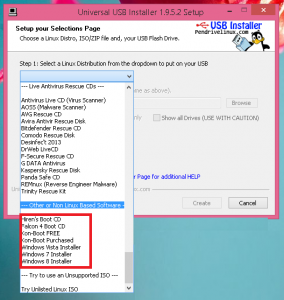


The persistent file can simply be deleted and at the next boot, the Ubuntu system will automatically use the bigger persistent partition. I used the GParted partition manager to resize the FAT32 partition and make space for a big EXT4 partition for the persistent storage.

The size of such a partition is only limited by the size of the USB drive. To have more persistent storage, this file can be replaced by a partition. This boot partition is formatted with FAT32 and because of limitations in FAT32, the maximum size of this file is 4GB. Universal USB Installer from ) create a persistent file on the boot partition together with the other files needed for booting. The stick works great on my Windows 7 netbook, but fails to boot properly on my Windows 7 desktop PC, probably because it is 64bit.The current Unix USB Installers (e.g. If your PC does not automatically boot from the USB stick into Kubuntu you will need to change your boot sequence.Īll being well, Kubuntu should load.Wait for the Universal USB Installer to complete – this took 10-15 minutes for Kubuntu with 2GB persistence on my Windows 7 netbook.Choose persistent file size – this is usually about half of the capacity of your USB stick.Format your USB stick as Fat32 if this has not already been done.Select the drive letter corresponding to your USB stick.Browse to the Kubuntu ISO file you downloaded.Select the Linux Distribution, in this case Kubuntu 10.04.x/10.10 Desktop i386/amd64.Run the Universal USB Installer in administrator mode.Insert your USB stick into a spare USB port, making a note of the drive letter assigned to it.Windows XP/Vista/7 PC able to boot from USB.It is essentially the same process as for Kubuntu, which goes something like this: Prerequisites There are instructions for creating a Portable Installation of the RepRap Host on the wiki using the Ubuntu distribution of Linux. However I don’t want to have a dedicated Linux computer, so a persistent USB stick seems to be the ideal solution for me So I have decided that running my next choice, ReplicatorG, on Linux might be worth a shot. The Host software is still a little buggy on Windows… The various RepRap software packages seem to work better on Linux than Windows: I’m experimenting with different software to control RepRap after having limited success with the RepRap Host Software. Any files you save or changes you make will be saved on the USB stick too. A persistent USB stick provides you with the equivalent of a Kubuntu computer that you can carry around in your pocket.


 0 kommentar(er)
0 kommentar(er)
